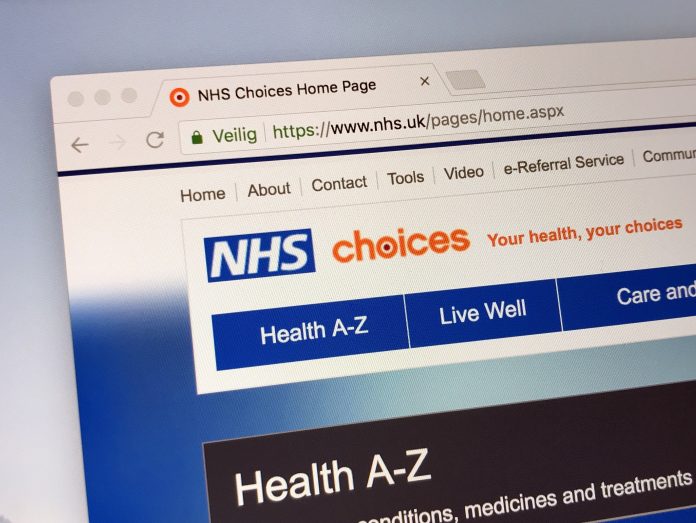Phil Turnock, Chief Digital Officer, NHS East & North Hertfordshire CCG, explores the link between modern healthcare and IT – looking at the similarities between the patient experience and the digital employee experience
As Chief Digital Officer at a wholly-owned NHS Shared Service, I’m lucky enough to work with six resolutely forward-facing NHS organizations. And while you might think that modern healthcare and modern IT occupy two quite different worlds, there are some similarities between their contemporary approaches.
For example, today’s NHS places a big emphasis on patient experience – the range of interactions that patients have during any course of treatment. This concept is closely analogous to digital employee experience (DEX), which aims to assess IT consumption through the full range of a user’s technological interactions.
Another key tenet in contemporary healthcare is preventative care, which prioritises the obvious but important fact that the most effective form of treatment, or cure, is prevention. This, in turn, mirrors ‘proactive IT’, which encompasses both self-help and self-healing (remediation) IT technologies and remove obstacles to productivity without the user having to turn to IT’s emergency services.
Indeed, there is arguably also a pressing need for healthcare to both embrace proactive IT and improve employee experience: for all healthcare providers, reliance on IT is only going to increase – and with it the need to provide a cost-effective superior IT service.
Next-generation care
When Wannacry hit in 2017, temporarily disabling much of the NHS’s IT infrastructure, it left ours unscathed, validating years of work we had invested in renewing our infrastructure for our 9500+ users: there was no ICT downtime for our clinical service users and therefore no impact on patient safety.
Having focussed initially on infrastructure, creating our own Hybrid Cloud, our strategy is to focus increasingly on new technologies that will improve the way we provide ICT services, encompassing new communication channels, robotic process automation (RPA), and (more recently – via Nexthink) both the digital employee experience and proactive IT.
For example, we were aware that our users should be enjoying a better experience through our service desk. There were excessive waiting times and other issues. These problems were exacerbated when, during migration from an on-premise email service to the NHS national service, incoming calls doubled. Many of these issues could be solved through self-help: introducing a chat portal alongside self-healing robotics smoothed the transition and continued to deliver value well beyond the point when call volume had returned to its normal level.
We also used proactive problem management during our Windows 10 migration. The platform gave us greater visibility into what users were really experiencing during the migration, and this enabled us to anticipate and remediate any issues before they become problems for the user base at large. As part of the Win10 migration, the existing ‘Snow Asset management’ tool which has an agent on every end-user device, started to increase processing times on the migrated Win 10 devices, which impacted performance. Using Nexthink as a problem-solving resource, we were quickly able to troubleshoot the issue and resolve the Snow client, with immediate effect.
Obstacles to recovery
IT innovation, then, can deliver great benefits to any healthcare organizations, public or private. With lives literally at risk, however, the implementation should be done extremely carefully. The following principles have helped us to ensure success:
-
Keep patients top of mind:
Patient- as well as user experience, should have a direct bearing on healthcare IT, too. Ensure you’re always seeking improved health outcomes – never just innovation for its own sake.
-
Aim for a frictionless environment
Ensure your final aim is to give your colleagues an environment in which their technology simply works, letting them do their jobs with the least possible obstruction or interruption.
-
Promote collaboration and sharing
The NHS is a patchwork of trusts and specialists. We work hard to ensure we share best practise and beneficial experience across all six of our partnerships. It’s an approach that could benefit the wider NHS also.
-
Listen to your customers
Nexthink enables us to collect sentiment data alongside hard metrics. If you want to be proactive and innovative, you need to have great lines of communication with your users.
-
Stay socially aware and mindful
If you’re in IT, you probably love technology. But if you’re working with the NHS, you can’t be led by this love of technology alone. Any expenditure has to be purposeful and socially aware.
-
Seek to make data available to those that need it
The ability for a healthcare professional to quickly access relevant information at the right moment can save lives: IT must help facilitate this access, safely and securely, across geographical or departmental boundaries.
Ultimately, as we seek to introduce technologies that can improve patient care by better empowering healthcare professionals, the first principle for IT has to be the same as the famous guiding medical injunction: “do no harm”. And to if you want to be sure that you won’t, you’ll need insight into your users’ digital employee experience.











